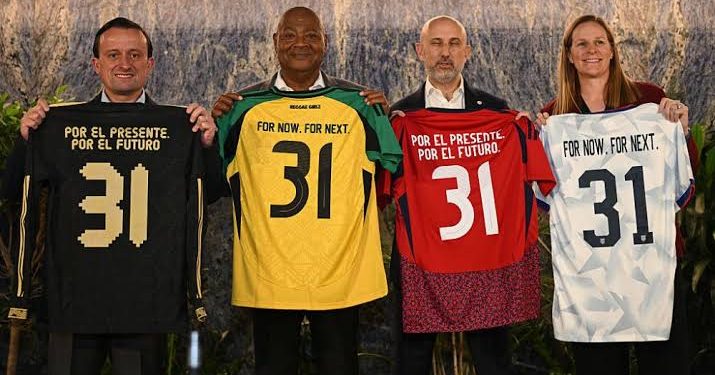A Look at the Opportunities and Challenges as North America Gears Up for the 2031 Women’s World Cup
As the excitement builds for the upcoming 2026 FIFA Men’s World Cup, North America is already looking ahead to another monumental event: the 2031 FIFA Women’s World Cup. This tournament will be the largest yet, featuring an expanded number of teams and matches across the United States, Mexico, Jamaica, and Costa Rica. As the clock ticks down, host cities must weigh the benefits and challenges of hosting this prestigious event.
During a recent bid presentation in Manhattan, U.S. Soccer President Cindy Parlow Cone announced that over 30 U.S. cities have expressed interest in hosting matches for the 2031 tournament, which aims to match the prestige of the men’s World Cup. “What excites me most isn’t just putting on a world-class tournament. It’s the legacy we will create,” Parlow Cone said. She emphasized that this Women’s World Cup would be equal in every sense to its male counterpart, highlighting the importance of quality facilities and support for players and fans alike.
In May, U.S. Soccer sent information packets to 29 cities, including 11 already slated to host the 2026 men’s tournament, to gauge interest in the women’s edition. Following summer meetings with FIFA, interest has grown to 40 cities, including candidates from the other host nations. This means more soccer, more fans, and potentially more revenue for these cities.
However, the question lingers: what is the real return on investment (ROI) for cities hosting the Women’s World Cup? Andrew Zimbalist, an economics professor at Smith College, points out that hosting mega sporting events often does not yield the expected economic benefits. “There’s no clear evidence that hosting any mega sporting event is ever a good economic investment,” he stated.
FIFA’s centralized revenue model complicates matters. Unlike the International Olympic Committee, local Olympic committees can profit from domestic sponsorships and ticket sales. FIFA, however, manages both revenue and operations, placing much of the financial burden on host cities. “Cities won’t have much bargaining power,” Zimbalist explained, noting that FIFA will always find cities willing to host under current terms.
One of the challenges of hosting the 2031 Women’s World Cup is the expansion to 48 teams, which may make it harder for cities to fill stadiums with enthusiastic fans. As cities contemplate their bids, they must navigate the uncertainty of hosting matches for less popular teams, often in half-empty stadiums.
Zaileen Janmohamed, president and CEO of the Bay Area host committee, expressed her desire to bid but acknowledged the need for a sound business case. “I want to bid, but I’m running a business, so it has to work for the business,” she said. The Bay Area could face significant costs, potentially up to $37 million, if funding from private investments and sponsorships falls short.
The cities hosting the 2026 World Cup have a unique advantage. They’ve already met FIFA’s infrastructure requirements, including stadium capacities, hotel accommodations, and efficient transportation networks. By 2031, they will have also gained valuable experience in managing logistics and fan engagement, making them well-prepared for another round of hosting.
Some host cities are considering the long-term value beyond immediate financial gains. Alex Lasry, CEO of the New York and New Jersey 2026 host committee, believes hosting a World Cup provides visibility and strengthens a city’s identity. “The real ROI isn’t just tax revenue or local business boosts; it’s visibility, identity, and long-term positioning,” he said. Hosting a Women’s World Cup match offers global exposure and the opportunity to showcase the city as ambitious and capable.
The upcoming tournament also benefits from a significant media partnership. Last year, Netflix secured exclusive broadcast rights for the 2027 and 2031 Women’s World Cups in the United States, promising to deliver unparalleled access to the matches. This partnership is expected to reach a massive global audience, particularly among younger viewers.
Historically, hosting women’s tournaments has proven beneficial at the national level. For example, the 2014 U-20 and 2015 Women’s World Cup in Canada generated $493.6 million in economic activity, exceeding initial projections. Similarly, the 2019 Women’s World Cup in France brought a reported $284 million boost to the country’s GDP, showcasing the potential benefits for host nations.
While Zimbalist acknowledges that women’s tournaments currently draw smaller crowds and lower TV ratings, he remains optimistic. “With the right investment, that gap could close and the economic differences could all but disappear in the years ahead.”








